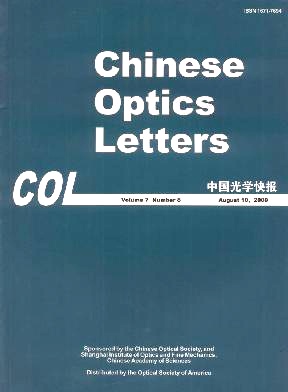Chinese Optics Letters, 2009, 7 (8): 08738, Published Online: Aug. 17, 2009
Influence of interface roughness on reflectivity of tungsten/boron-carbide multilayers with variable bi-layer number by X-ray reflection and diffuse scattering  Download: 519次
Download: 519次
多层膜 粗糙度 反射率 散射 310.0310 Thin films 220.0220 Optical design and fabrication 230.0230 Optical devices 340.0340 X-ray optics
Abstract
Influence of interface roughness on the reflectivity of Tungsten/boron-carbide (W/B4C) multilayers varying with bi-layer number, N, is investigated. For W/B4C multilayers with the same design period thickness of 2.5 nm, a real-structure model is used to calculate the variation of reflectivities with N=50, 100, 150, and 200, respectively. Then, these multilayers are fabricated by a direct current (DC) magnetron sputtering system. Their reflectivity and scattering intensity are measured by an X-ray diffractometer (XRD) working at Cu K\alpha line. The X-ray reflectivity measurement indicates that the reflectivity is a function of its bi-layer number. The X-ray scattering measured results show that the interface roughness of W/B4C multilayers increases slightly from layer to layer during multilayer growing. The variation of the reflectivity and interface roughness with bi-layer number is accurately explained by the presented real-structure model.
Min Dai, Zhong Zhang, Jingtao Zhu, Xiaoqiang Wang, Jing Xu, Xiuhua Fu, Liang Bai, Qiushi Huang, Zhanshan Wang, Lingyan Chen. Influence of interface roughness on reflectivity of tungsten/boron-carbide multilayers with variable bi-layer number by X-ray reflection and diffuse scattering[J]. Chinese Optics Letters, 2009, 7(8): 08738.





